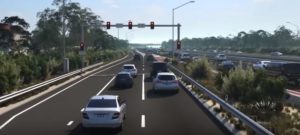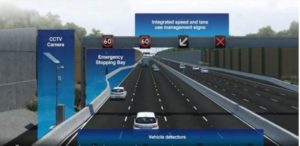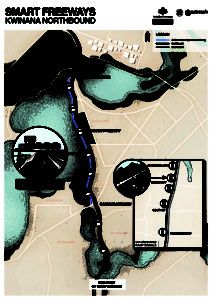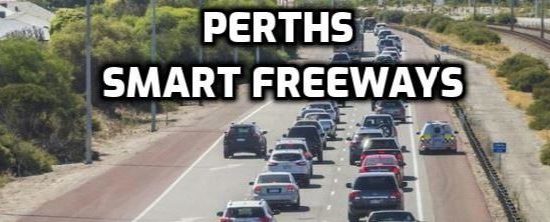Perths Smaert Freeways
April 3, 2020
PERTH’S SMART FREEWAYS
On a 13Km stretch of Kwinana Freeway, between Farrington Road and the Narrows Bridge, WA’s first Smart Freeway is taking shape. The upgrade will require drivers to embrace a whole new way of using a freeway in WA, from traffic lights at the on-ramps to variable speed limits, enabled by new technologies which should see a significant change for the better in the travel along that section of freeway.

Smart Freeway Traffic Signals on on ramps
The most immediate change will be to lanes between Canning Highway and the Narrows, which previously had three lanes as well as an emergency lane along the river. It will now be converted to four traffic lanes with what is known as “all lane running”, turning the emergency lane into a permanent live traffic lane. The introduction of all lane running allows Main Roads to provide increased traffic capacity using an existing lane, but it presents a challenge in the risk of crashes and breakdowns. My Getaway Driver – Transport Services has learnt that there are plans for around six emergency stopping bays, one approximately every 600m, allowing drivers to pull over safely. Each will be equipped with roadside assistance phones and monitored to ensure vehicles aren’t stranded.

Looking for Transport to and from the Airport ? Great rates, comfortable vehicle available 24 / 7
Monitoring the Road ahead
If a vehicle does breakdown in a live lane, or if traffic is backing up, another part of the Smart Freeway system kicks into gear. Monitoring cameras, over 440 sensors and even radar and thermal imaging will detect problems, stopped cars and crashes, and alert the Road Network Operations Centre. The Operations Centre can then use overhead signs to close lanes by marking them with an X similar to the Graham Farmer Freeway Tunnel, or be able to vary speed limits to improve traffic flow and safety and provide real-time traffic information to road users with electronic message signs.

Perth Smart Freeway Variable Speed control
How bad are Pert's freeways ?
As population grows in Perth and surrounding suburbs, so does the congestion. As such the time it takes to perform essential tasks also increases. It becomes harder to reach schools or workplaces, and delays in reaching hospitals or emergency services can cost lives. Congestion across Perth’s road network is estimated to cost $4.5 million a day, and without substantial changes, that figure is expected to double to more than double to $10.5 million a day by 2031.

Perth Smart Freeway Map
Effectively managing congestion is a complex balancing act. What is clear is that a range of strategies, beyond changes to the road network, will be needed to ensure we can keep Perth’s road network moving as our city grows.

